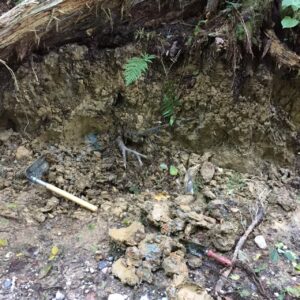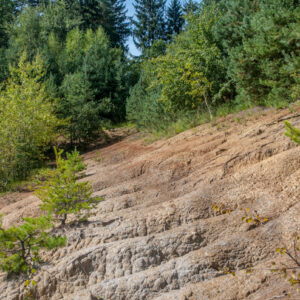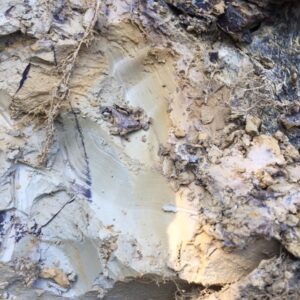How to find clay in nature: part I
Many people ask me, how I can find clay in nature and how do I know it’s clay.
What is clay? You can google it, you can find a geological description on Wikipedia, but I will give you a different explanation. Clay are rocks, crushed and weathered to smallest particles – smaller than 2 μm. Between the particles is water, which makes the material plastic and workable. I think of clay as liquified rocks. So depending on the origin rock, there are many different clays. During the process of weathering, clays can stay on site, and stay very clean, or, they can travel from the original place, mixing with all sorts of other clays, metal oxides and organic matter. I think of clay as natural material available to almost anyone who shows some effort in finding it. Clay is Earth’s flesh.
For a geologist clay needs to have a clay mineral. But from a potter’s perspective, clay can be any kind of plastic material that you can work with and after fire, stay in the same shape. I met Australian potter Steve Harrison few years ago. He tries to be as self sufficient as possible with ceramic materials. Since he didn’t have any clay in his direct surroundings, he made it from rocks, which included milling, soaking in water and ageing with vinegar for about a year, if I remember correctly. He made a kind of porcelain.
- How do you know it’s clay?
There are several indicators. I like to go clay hunting after rain. After rain terrain is wet, colours get more contrasted and you can try the wet material if it is sticky and plastic. There is a simple test: grab a handful of material, roll a coil and bend it like U letter. If the coil is plastic enough, it will not crack. That means it is most likely clay. But again, it needs to be moist enough. Do not confuse too dry with not plastic. They both crack.
Colour and texture. Clay comes in many colours, but it is usually different than the soil of the vegetation cover above it. Observe how the soil and the humus looks like, see the difference from that layer and what is under. Usually vegetational cover is 10-30cm deep. After that it can be rocks, sand or clay.
Colour. Clay can be light grey, dark grey, brown, orange, olive, cream, ochre, red and many other colours.
If the clay is exposed – without that vegetational cover, it is either in dry or moist form.
Dry form has special properties: the upper surface cracks with very clear and distinctive cracks. If you crush this dry clay in hand it breaks to particles that have sharp edges and flat surfaces, it is possible it is clay. If you try and break a piece of material that looks like rock and you manage to break it easily, it is likely to be clay. You can break clay, but not all rocks. Scratching is another test. You can scratch dry chunk of clay with your finger nail and you will leave a scratch line.
There is good possibility that the ground you stand on, has clay under your feet.
Stay with me for part II.





